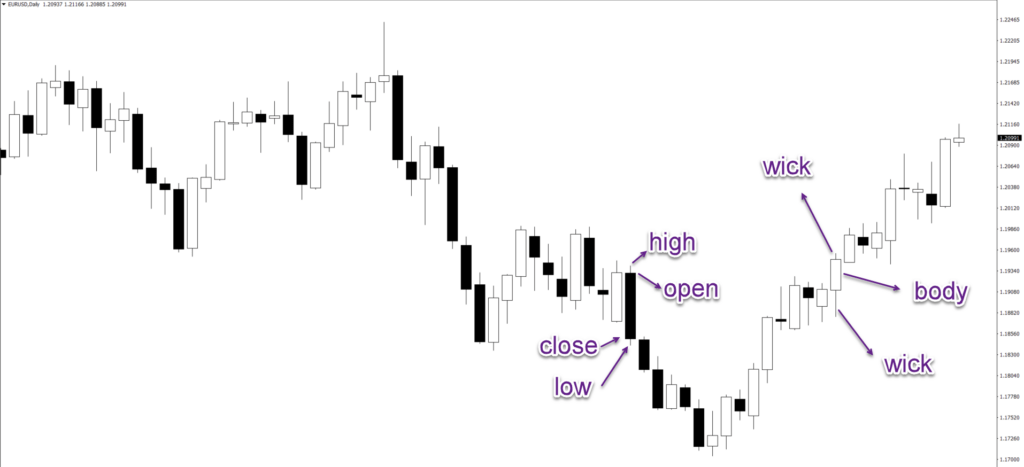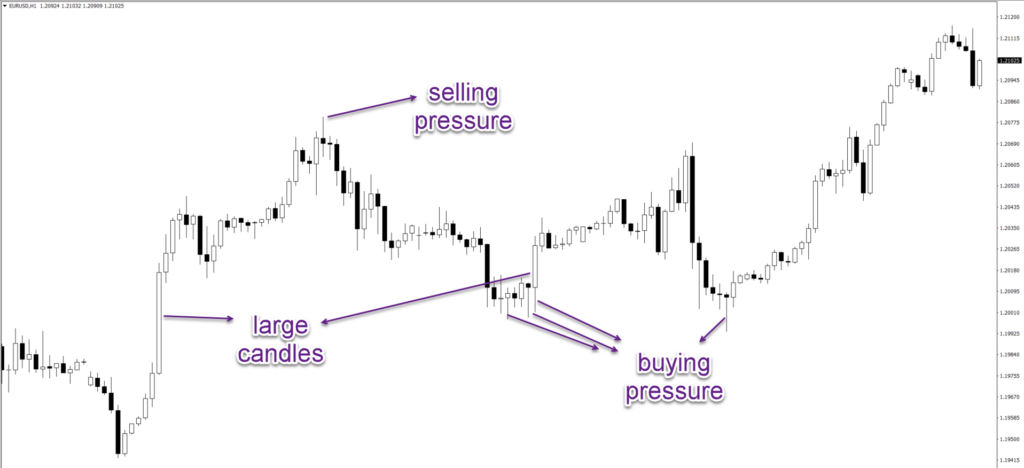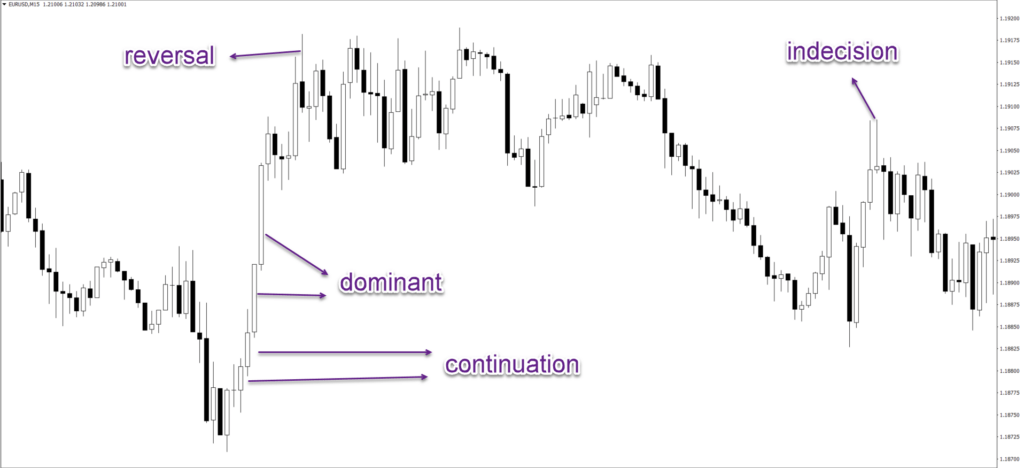- The candlestick has a body and a wick
- Used for measuring price action
- Each candlestick is a measurement of a chosen time frame
Japanese Candlestick Basics - What Are They Used For?
Most traders prefer to choose the Japanese candlestick for measuring price action. But perhaps you are unsure why traders like to use them? Or maybe you are wondering how to benefit from candles? The Japanese candlestick is a type of price chart. It can be used for measuring the price of any type of financial instrument. Candlesticks are used in technical analysis for analyzing and trading decisions. It is claimed that they were developed by a Japanese rice trader called Munehisa Homma in the 18th century. Each candlestick represents one unit of the chosen time frame. So when analyzing a daily chart, each candlestick is one daily candle. This is valid for all time frames: a 1-hour chart shows 1-hour candles and a 15-minute chart has 15-minute candles. The candlestick offers 4 points of information on each and every candlestick:
The candlestick offers 4 points of information on each and every candlestick:
- The candle open
- The candle close
- The candle high
- The candle low
The Candle Body
The difference between the candle close and open.The Wick Or Shadow
The difference between the candle low and high versus the candle open and close. Basically, wicks are all price action outside of the body. Wicks can be on the top of the candle and/or at the bottom of the candle.Japanese Candlestick Analysis
Each Japanese candlestick offers traders a method for analyzing the battle between bulls and bears. It shows the actual current state of affairs without any delay - contrary to some lagging indicators that have a delay. It is always key to use Japanese candlestick closes and not open candlesticks. Why? Simply because an open candlestick can still change its character. Price will still move up and/or down. This means that the actual candlestick could close in a very different way than it currently looks like when it was still open. Let’s review how traders can use Japanese candlesticks. Direction, control, candle size, and selling plus buying pressure are the key aspects.Candle Direction
The first key component of a candlestick is direction. Each candlestick shows whether there was a winner in that time frame: bulls, bears or nobody (indecision - Doji):- Bullish: a candle close above the candle open. Bulls were able to push the price higher during this candle. Usually bullish candles are green, blue or white.
- Bearish: a candle close below the candle open. Bears were able to push the price lower during this candle. Usually bearish candles are red or black.
- Indecision (Doji): a candle close to the candle open. Both bears and bulls were unable to push price either way.

Candle Control
The second aspect is whether the bulls or bears are actually in control of that candlestick. This can be measured by measuring the distance between the candle close and the candle high or candle low:Bullish Candle
- Strong control: bullish candle closes near the candle high.
- Weak control: bullish candle closes further from the candle high.
Bearish Candle
- Strong control: bearish candle closes near the candle low.
- Weak control: bearish candle closes further from the candle low.
Selling And Buying Pressure
Lastly, Japanese candlesticks are a key factor for analyzing changes during the candle. This can be done by reviewing the candlestick wicks. A large wick indicates that the balance of power changed within the candlestick itself:Bullish Wick
- This is a wick on the bottom of the candlestick.
- Sellers were winning but the bulls pushed the price back up when the candlestick closed.
Bearish Wick
- This is a wick on the top of the candlestick.
- Buyers were winning but the bears pushed the price back down when the candlestick closed.

Candle Size
The candle size indicates the importance of the candlestick. A relatively large size candle is more important than a relatively smaller sized candle. The reason is that a large candle has a more decisive character. A small candle usually is less relevant because it indicates indecision. That said, indecision can sometimes play a key role in a reversal. So even smaller Doji candles can offer important information. But in general, larger-sized candles are more valuable for your analysis.Live Examples Japanese Candlestick Analysis
These four aspects (direction, control, pressure, and size) can be combined to analyze the price chart. There are about 4 common combinations:- The dominant candlestick: a large-sized candle with a close very close to the high or low, which is a classical candlestick indicating a dominant bullish or bearish direction.
- The continuation candlestick: a medium-sized candle with a close quite near the high or low, which is a normal candlestick indicating a bullIsh or bearish continuation.
- The reversal candlestick: a medium or large-sized candle with a wick on one of the 2 sides.
- The indecision candlestick: a small or medium-sized candlestick with an open and close near each other and often around the middle of the candle.

Japanese Candlestick Patterns
Japanese candlestick patterns are price patterns based on 1 to 4 candlesticks. They indicate either a trend continuation or reversal:- Bullish continuation.
- Bullish reversal.
- Bearish continuation.
- Bearish reversal.


 Amazon
Amazon